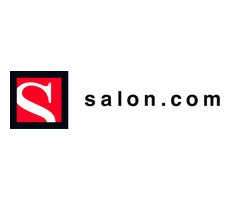The cast members think they’re signing on for fame and fortune. Then the red guys with the pitchforks show up.

Note: This article was original published by Salon.com on July 17, 1996. I was paid about $200 to write it as a freelance. It was for an online column called Media Circus. My editor for this piece was the very young Dave Eggers of Might Magazine, who has since written a couple of very good books.
MTV’s “The Real World” is the best, most sadistic show on television. It is more torturous, and thus says more about the human condition, than any other program on the tube. In its theme and in the fate of its characters, “The Real World” recapitulates Jean-Paul Sartre’s famous play “No Exit”: Their protagonists are similarly doomed to Hell.
Each year, MTV selects seven wildly disparate young people to participate in an experiment. They place all seven people in one apartment, requiring them to interact for six months while being almost constantly observed by camera crews. The locale changes each season — New York City, L.A., Miami — but the objective stays the same: Light the fuses of seven explosive personalities and wait for the fireworks.
Light the fuses of seven explosive personalities and wait for the fireworks.
As viewers, we are privy to every detail of the cast members’ lives. When they go to the bathroom, we are there. When they are on a date, we are there. When they cry, scream, fight, laugh and say unfathomably stupid things, we are there. Because the show is pared down to half-hour episodes, most of what the producers film is edited away. And so in the end we only trust what we see on television — what happens offscreen might as well have never happened at all. It is the perfect existentialist production — being is nothingness, life is television.
“Hell is — other people” is Sartre’s refrain, and neither the characters in his play nor the cast of “The Real World” can escape their conditions. The difference between them is slight but crucial: “No Exit’s” Inez, Garcin and Estelle are fictional characters, while the doomed participants of “The Real World” are actual people. “The Real World” is not a holiday in other people’s misery, it is misery in other people’s holiday.
“The Real World” is not a holiday in other people’s misery, it is misery in other people’s holiday.
Worse, the players in “The Real World” are all volunteers — they asked for it. In order to get on the show, the cast members beat out 10,000 other contestants, all of whom lined up like eager, deluded lemmings for their big opportunity to cross the river Styx. It’s no coincidence that the casts of each season contain musicians and models, artists and dancers, or that they must be between the ages of 18- to 25-years old. These are the people most susceptible to the Faustian bargain: “Sell out young, my pretty, I can make you famous — for a price.”
The Faustian booty is undeniably plush. The houses are from a twentysomething’s dream: ornate and luxurious decor, hot tubs and swimming pools, duplexes in the trendiest neighborhoods in town, rent free. The first show of the first season (in 1992) opened with cast member Eric Nies sitting alone in front of a fish tank, in awe of his new apartment and amazed at his good fortune. His new digs are, in his words, “Unbelievable.”
Eric now hosts MTV’s “The Grind,” the network’s afternoon dance show, and he established the model for all successive cast members to emulate: His success, minor as it may be, was garnered solely from his appearance on the show. The cast’s hope is to make a mark on the world, but with few exceptions, they are left with only a bad tattoo. They have made the mistake of their lives — they are forever doomed to be “That Girl from the Real World.” No future career change is possible.
In the dark underworld of voyeur-driven television, they occupy the dankest sub-basement. Talk show panelists come and go in under an hour. Suspects in “Cops” are glimpsed only for a moment. Even the human skeet who populate the tabloid news shows are quickly destroyed. But thanks to the length of each season and the magic of syndication, “Real World” members live in television’s fiery circle of Hell forever.
All of their mistakes, their frailties, gaffes and foibles, are captured for all eternity. For David, a cast member from the 1993 Los Angeles installment, a midnight prank in which he yanked the covers off half-nude Tami will dog him for life. Julie, from the original cast, will always be seen asking her African-American roommate Kevin if his beeper meant he sold drugs. And Puck, the jobless bike messenger from the show’s San Francisco incarnation, is forever a jerk, cursed with being the guy who was unanimously kicked off the show, and thus out of Hell. He should be grateful.
At least Sartre’s characters come to recognize their hellish plight. Estelle asks, “Why should we of all people be put together?” Garcin responds, “A pure fluke.” Inez, however, has figured it out, “You amuse me with your ‘flukes.’ As if they left anything to chance! I tell you they’ve thought it all out. Down to the last detail. Nothing was left to chance. This room was all set for us.” The “Real World” cast has no such awareness. They have been duped into believing that they control their fates. Up until the end, they honestly believe they are the chosen ones.
the Cul-de-Sac of Babble is filmed with a thoroughness worthy of Big Brother
They have been chosen, all right — as cannon fodder for emotional conflict and the on-air humiliation that is the best television has to offer. The cast’s residence in the Cul-de-Sac of Babble is filmed with a thoroughness worthy of Big Brother — their privacy is denied, their civil rights withheld, their total subjection is revealed. MTV is the omnipotent narrator of the cast’s recent past, the unseen torturer, an editor with one eye on a bare ass and the other on their ratings. The soundtrack is cued to both mock them and set them up to be further shot down. Deer paraded before headlights, standing transfixed in the glare of notoriety, they find themselves neither embarrassed nor empowered. They are the antithesis of Dorian Gray, who sold his soul for immortality — they age while their portrait remains forever young, forever flawed.
Doomed to the squalorous, broiling, eternal prison of MTV reruns, they are forced to watch their mistakes forever, finally driven to cry out like Inez in the final scene of “No Exit”: “(We’re) Dead! Dead! Dead! Knife, poison, ropes — all useless. It has happened already, do you understand? Once and for all. So here we are, forever.”
MTV's The 'Real World' is Hell



